candle lamp
Flashlight Enthusiast
Fenix have released the headlamp HL10 2016 Edition, with Philips LXZ2-5770 LED installed, powered by 1xAAA. It will give you both spot and flood beam, adjusting the front rotatable lens. Although it's a headlamp, it can be used as a key-chain light, if you want.
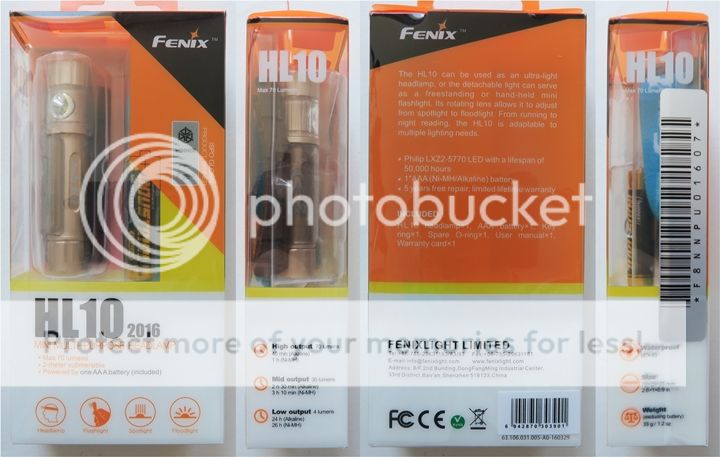
.
.
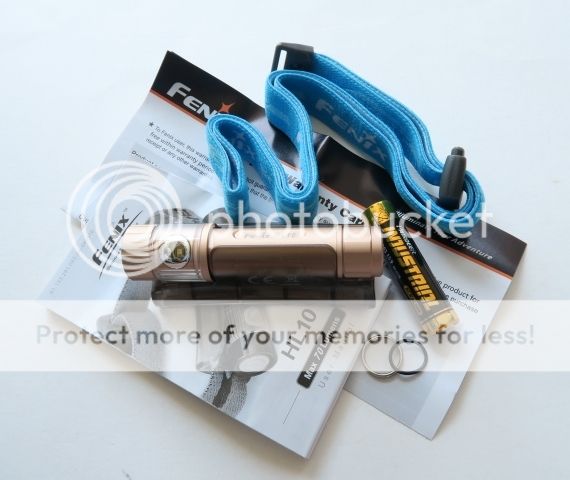
The light comes in a clear plastic container. It comes with a headband, spare o-ring, key ring, 1xAAA battery, user manual and warranty card.
.
.
Manufacturer Specifications from Fenix website & manual :
• Utilizes Philips LXZ2-5770 LED with a lifespan of 50,000 hours
• Powered by one AAA (Ni-MH/Alkaline) battery
• 70mm / 2.76" (Length) x 26mm / 1.02" (Width) x 23mm / 0.91" (Height)
• 33g / 1.2oz. (including headband, excluding battery)
• Uses rotating optical lens for flexible adjustment of spotlight and floodlight
• As a headlamp, 180-degree tilt mechanism adjusts the beam when needed
• As a flashlight, supports tail standing, works as a candle
• Digitally regulated output maintains constant brightness
• Reverse polarity protection, to protect from improper battery installation
• Made of durable aircraft-grade aluminum
• Three colors option
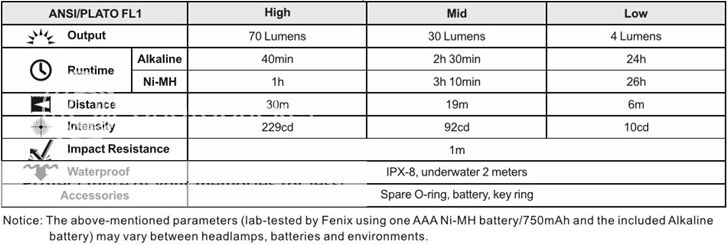

.
.

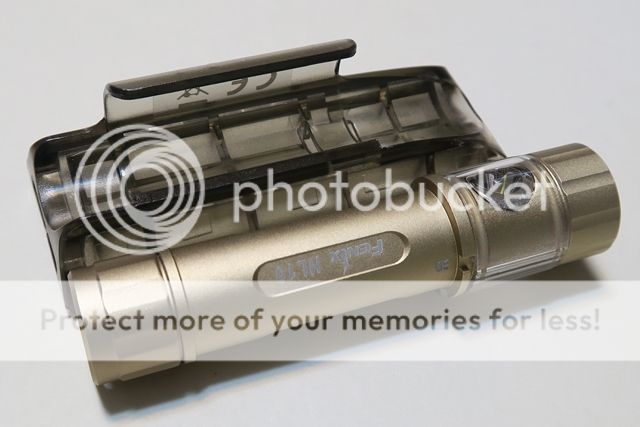
Like the HL10 2013, the HL10 2016 headlamp is a light and holder structure. You can use it as a key-chain light.
.
.
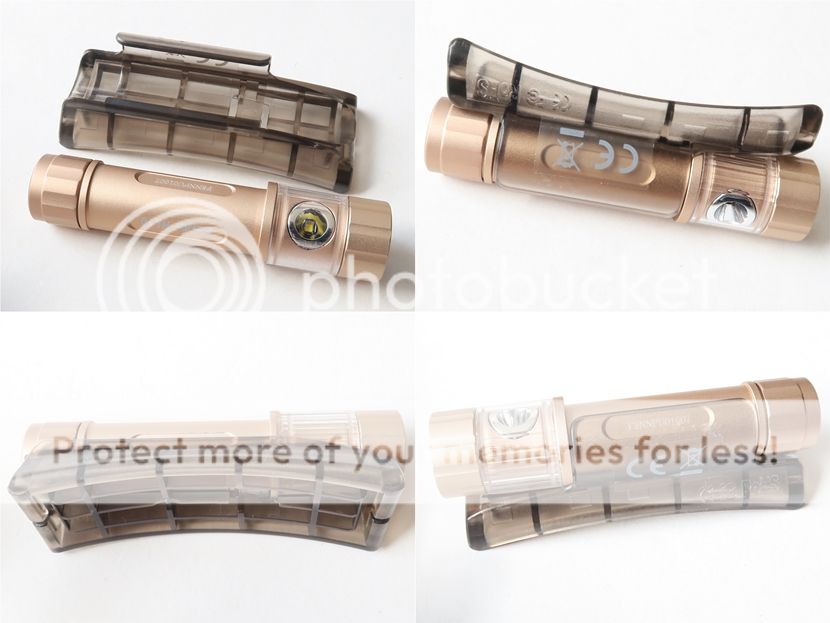
The hard plastic holder is composed of a clip holding the light and a bracket for headband. The clip holds the light fairly firmly, but it seems there may be no risk of scratching the light when pulling it off or fitting it into the clip, as the material is plastic.
.
.
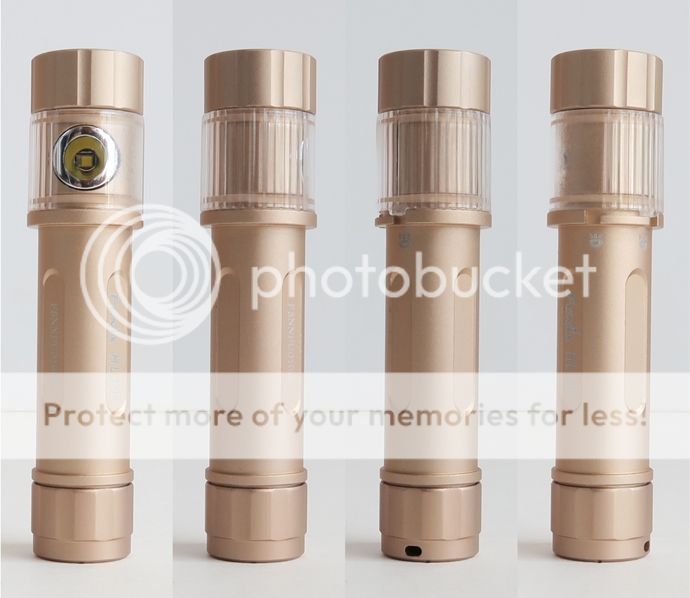




You have three body color options available (i.e., gold, black and lilac). My review sample is gold. I'm not sure the anodizing is hard type III, but it's a matt gold and consistent throughout with no chips or blemishes to be found on my sample. Labels are fairly minimal and not as bright as other lights, but clearly legible against the background. There is no anti-roll indentations on the body
.
.
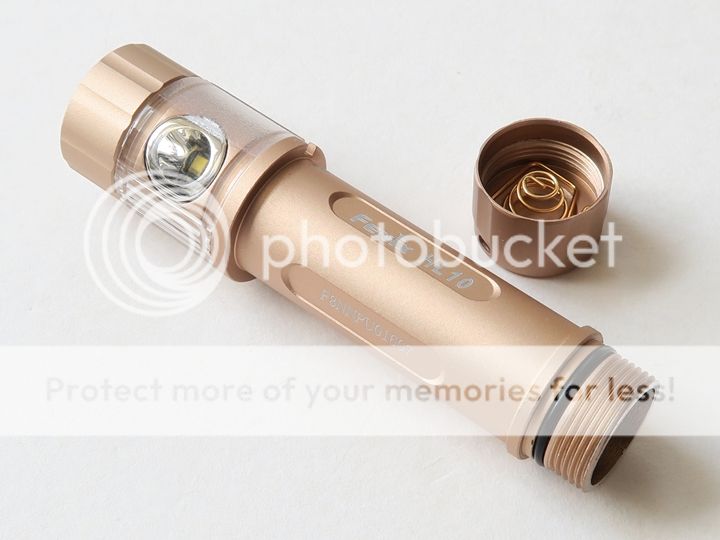
The light has 2 parts (i.e. integral head-battery tube and tailcap).
.
.
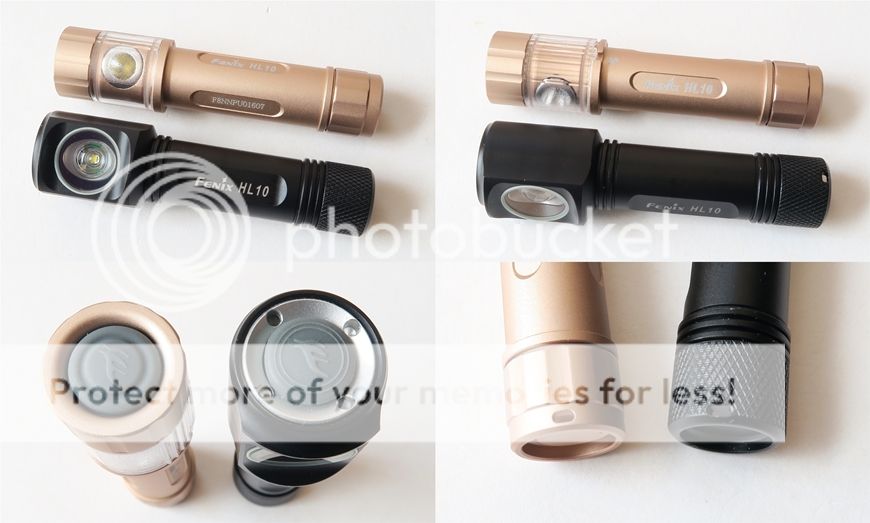
You can see some differences between the HL10 2013 and the HL10 2016.
.
.
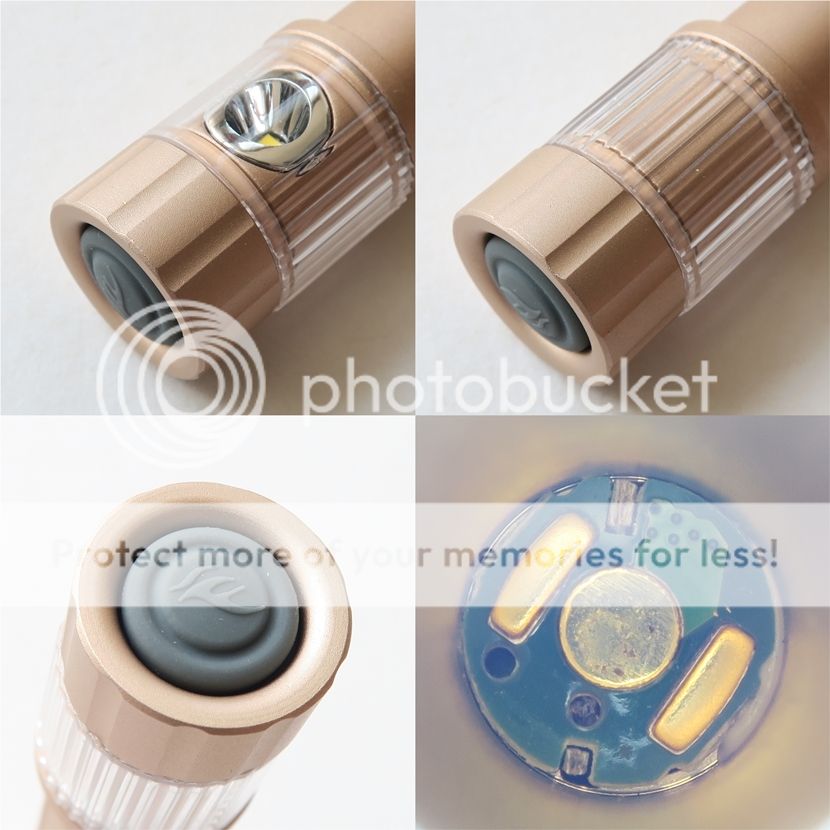
The light has electronic control switch on the head. The switch cover has a textured grip, and is slightly protruded. Like the HL10 2013, it has a firmer switch feel, requiring a definite click to activate. The switch is easy to access. Feel of the switch is good for this type, with a lightly audible click as you make contact. The positive contact in the head has a physical reverse polarity protection. There is a rotatable lens which is plastic.
.
.
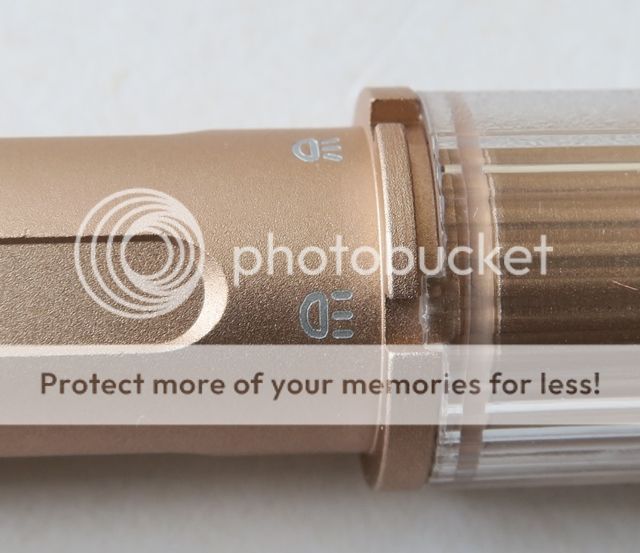
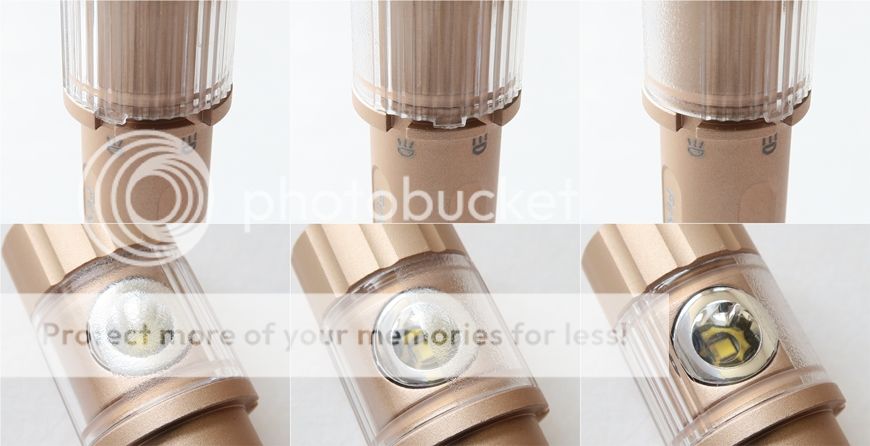
There are the beam pattern marks (i.e., flood and spot beam) on the rear part of the body, and you can select the beam pattern, rotating a detent on the rotatable lens.
.
.
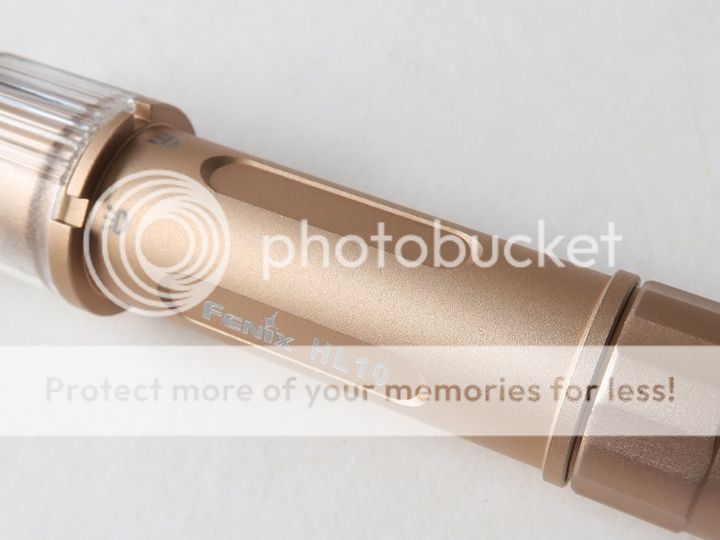
The battery tube has a clean cylindrical tube design with four flat faces machined on where manufacturer name, model name and serial number are printed. There is no knurling on the tube. Unlike the HL10 2013, tail threads are anodized, so tail lockout is possible. Base of the tailcap has a simple spring.
.
.
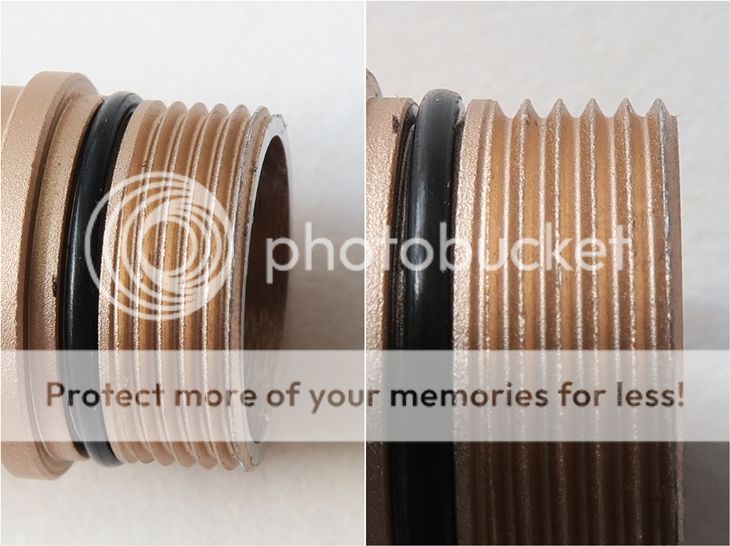
The screw threads are good quality triangular-cut. My sample has no lube on the threads. But I haven't experienced any problems with cross-threading. It is difficult to unscrew the tailcap and change battery when the light is mounted in the clip of the holder.
.
.
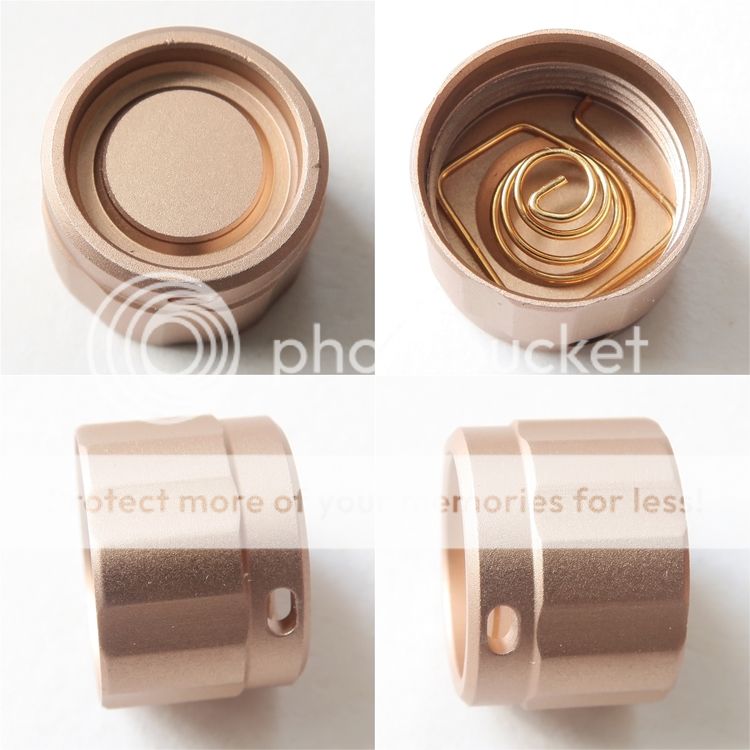
The rear end of the tail cap has a tiny hole for split-ring attachment. It seems to be stronger than the HL10 2013, as it is slightly farther to the edge. The HL10 2016 can tailstand, without the split-ring attachment.
.
.
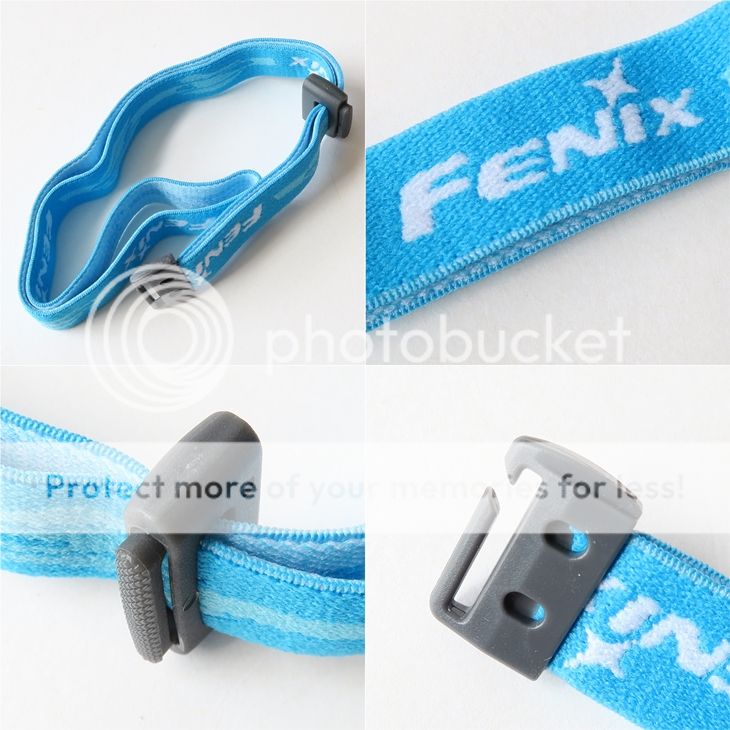
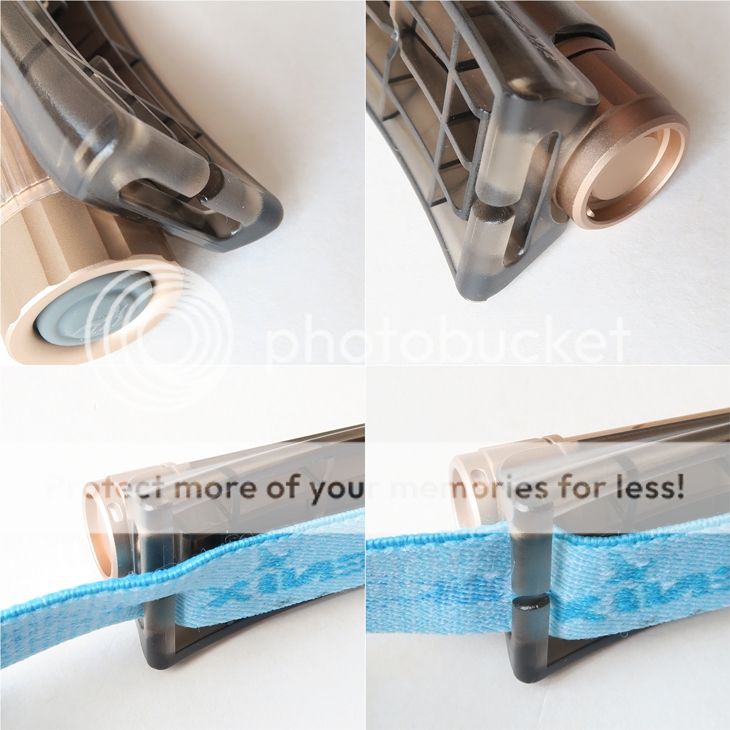
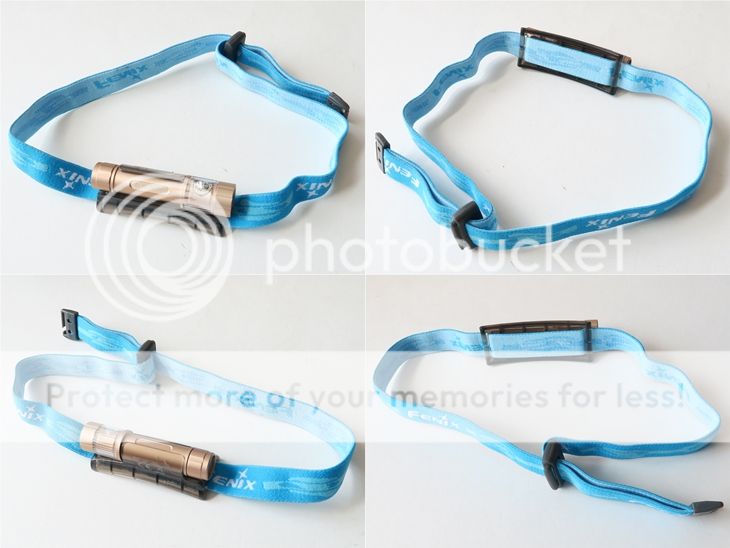
There is a stopper for adjusting the strap. The headband is good quality, and worked well in my testing. It holds the headlamp securely (both within the holder, and strapped to your head), but still allows for accurate positioning. The headband may fit to those who has large head size, as its length is longer than the HL10 2013.
.
.
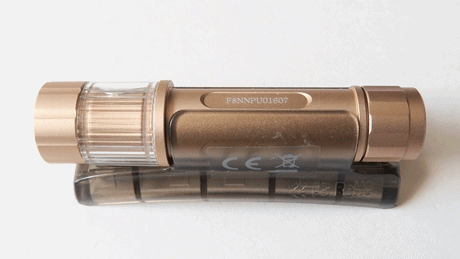
The angle adjustment is 360 degree (i.e., the light can rotate freely in the clip) and the light is not moved at any point during use.
.
.
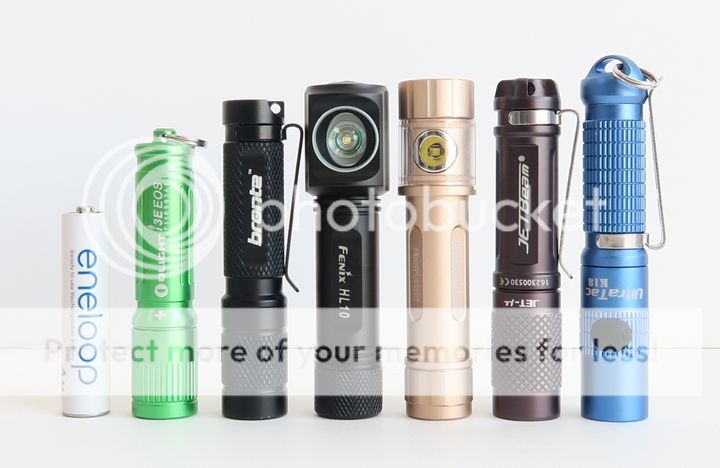

From left to right, Panasonic Eneloop AAA(750mAh), Olight i3E EOS (Luxeon TX), Bronte BT01 (XP-G2), Fenix HL10 2013 (XP-E R4), Fenix HL10 2016 (LXZ2-5770), Jetbeam Jet-μ (XP-G2 S2), Ultratac K18 (XP-G2 S2).
.
.
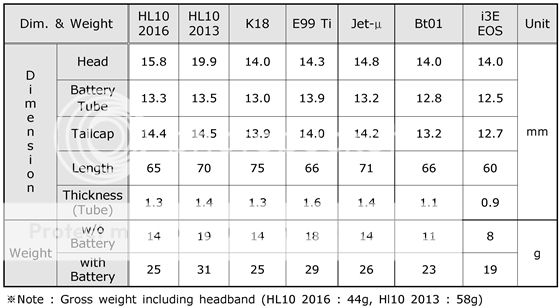
The HL10 2016 is very small, and its weight is lighter than the HL10 2013.
.
.
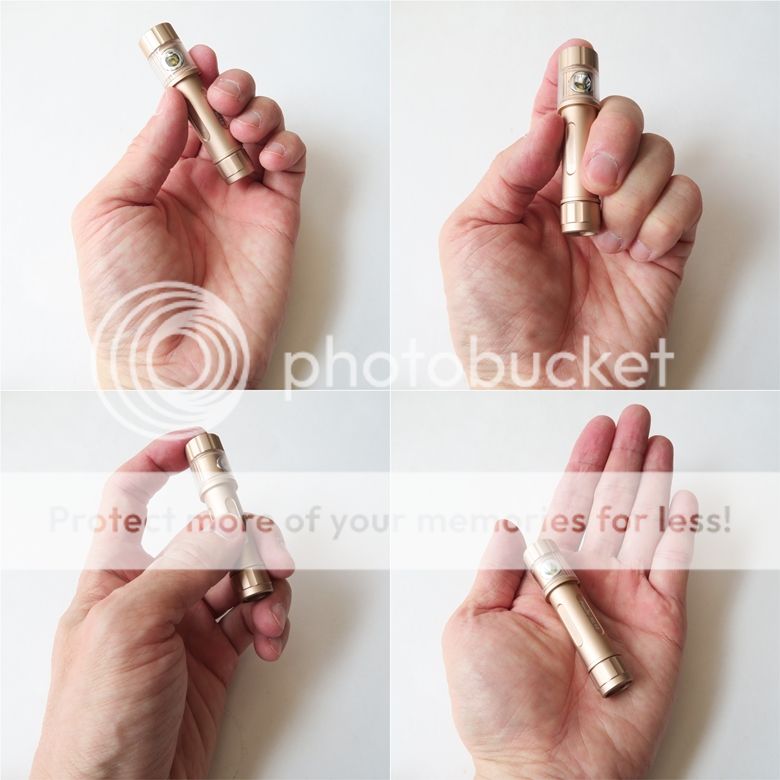
The light itself is very compact. The wall thickness of the tube is 1.3mm (i.e., almost the same as the HL10 2013). The light feels solid. The use of Li-ion 10440~10450 rechargeable is banned. The build quality is excellent.
.
.
User Interface
HL10 2016 has the same UI as the HL10 2013.
There are three constant output levels only (i.e., no flashing mode).
The light is turned on/off by pressing and holding the switch for 0.5 seconds.
Give a quick click of the switch to advance through outputs when on, which proceed in sequence from Low -> Med. -> High, in repeating sequence. The light has mode memory, and remembers the last output level used when you turn the light off and back on, (even after a battery change).
.
.
Standby Current Drain
Due to the electronic switch, there is going to be a standby current drain when a battery is installed. I measured this current as 14.8 uA that is the same value as the HL10 2013. Considering Eneloop AAA (750mAh) capacity, that would give you around 5.8 years before fully charged battery would be completely drained. As there is tail lock-out feature, the drain is absolutely nothing to worry about. As usual, I recommend you keep a battery separate from the light when not in use for a long time.
.
.
PWM
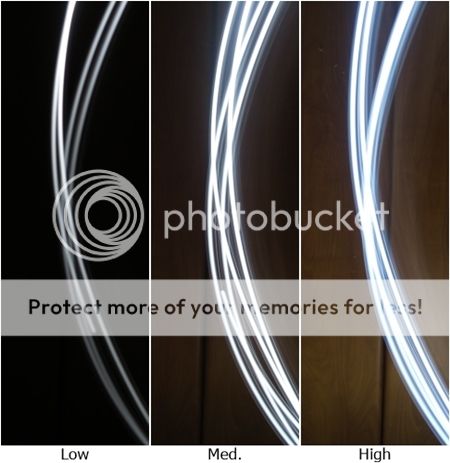
The lights show no sign of PWM at any output level. The light is constant current controlled. I notice there is no buzzing sound at any levels.
.
.
Runtime
The runtime to fall to 10% of its initial output from 30 seconds after the point the light is first turned on (i.e., based on ANSI FL-1) for High is as follows :
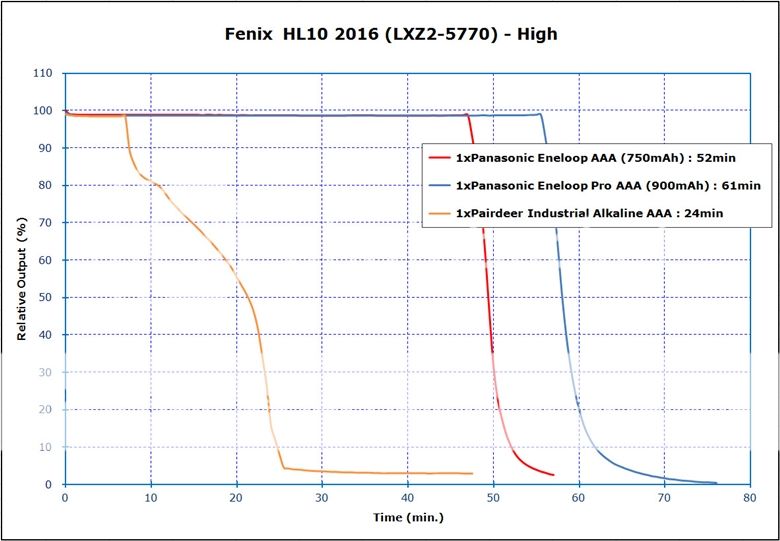
As expected, the higher capacity cell gives you extended runtime. The light maintains perfectly flat regulation for an extended period, before dropping output through High on both two different chemical batteries. The difference is how long they last before falling out of regulation.
.
.
Beamshot
1. White door beamshot (about 50cm from the white door) on max. output on 1xPanasonic Eneloop AAA (750mAh)
- ISO125, F/8.0, 1/25sec, Auto white balance
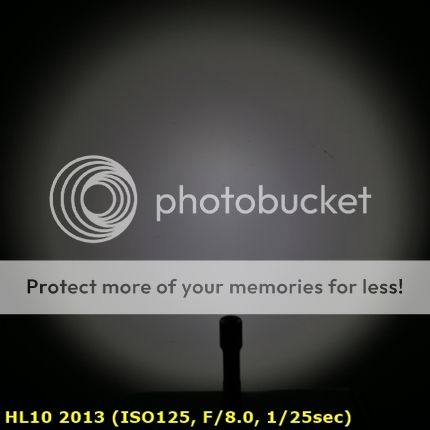
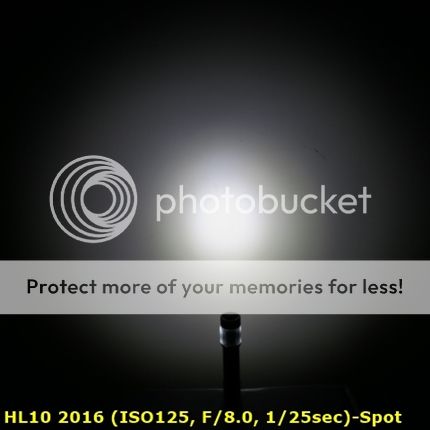
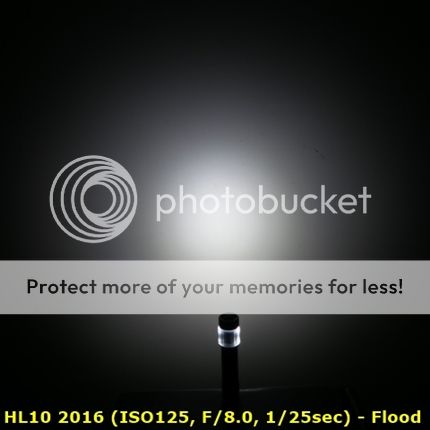
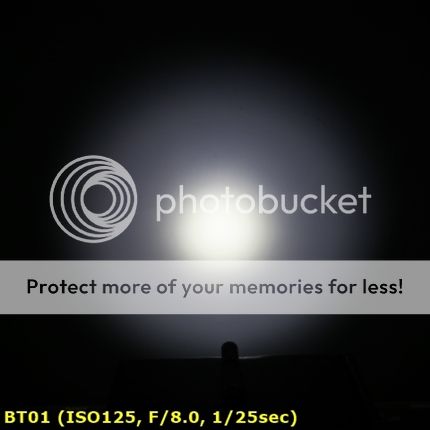
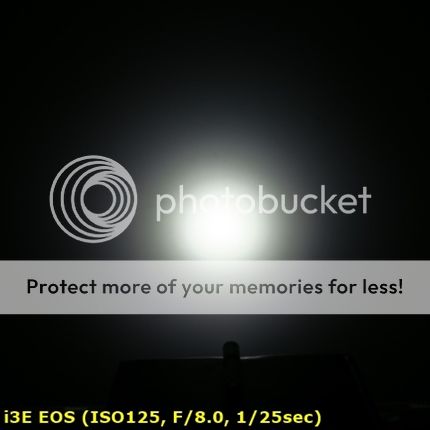
.
.
- ISO125, F/8.0, 1/100sec, Auto white balance
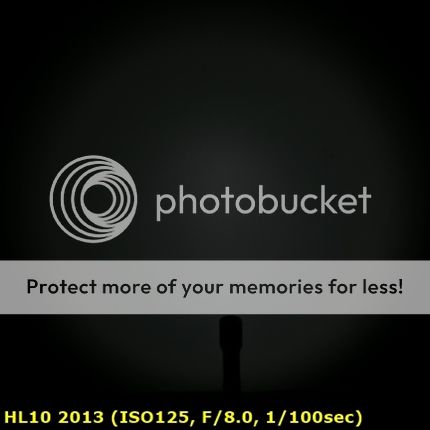
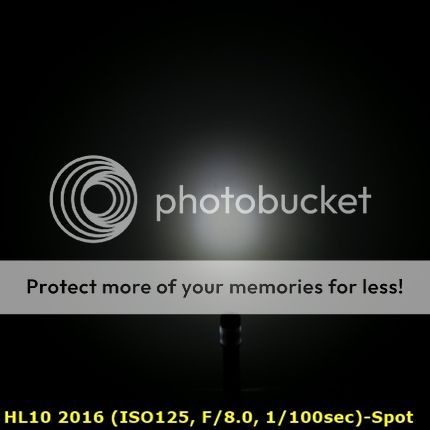
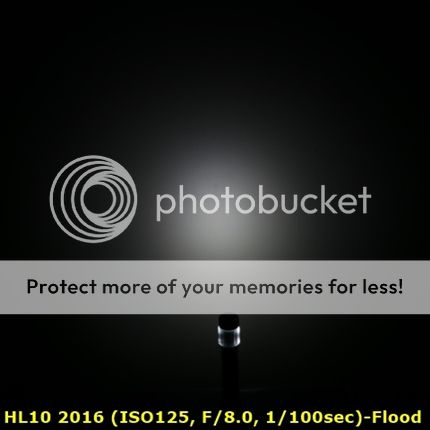
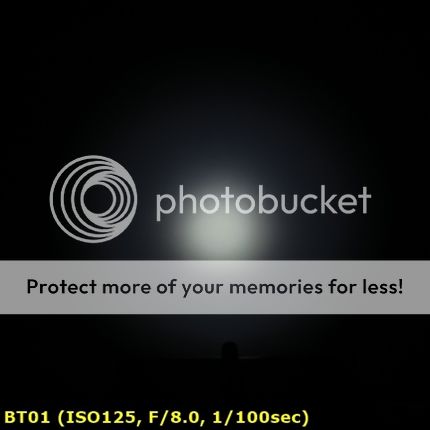
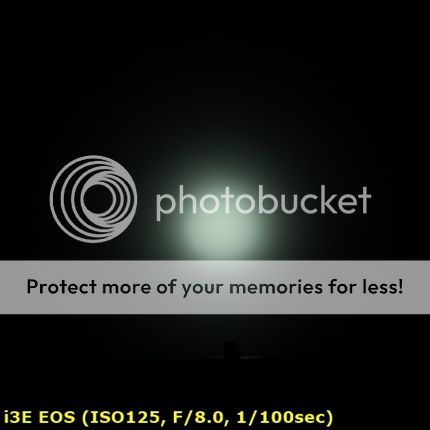
.
.
- ISO125, F/8.0, 1/800sec, Auto white balance
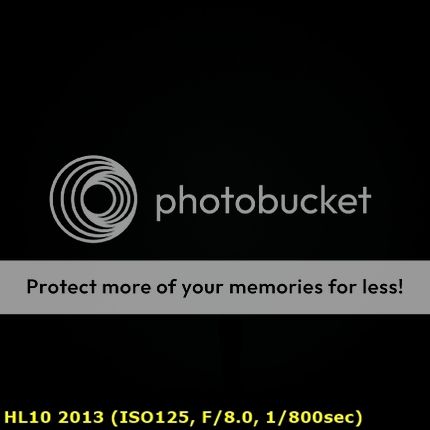
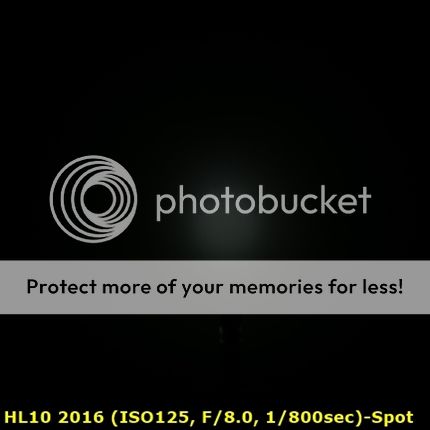
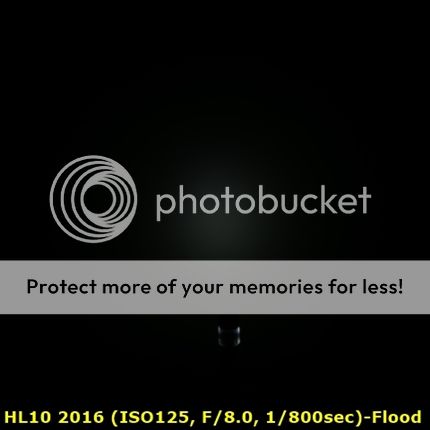
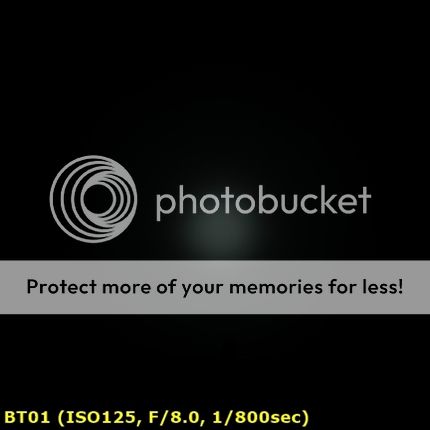
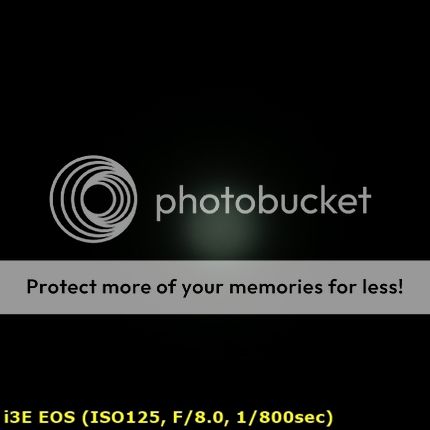
.
.
- ISO125, F/8.0, 1/2000sec, Auto white balance
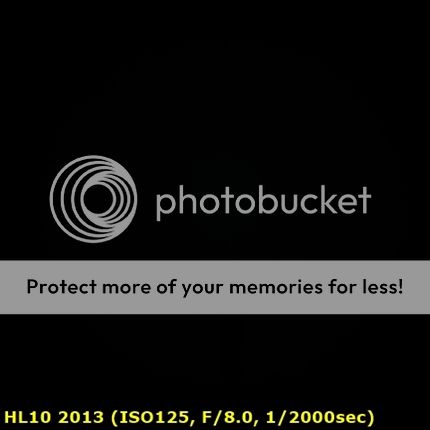
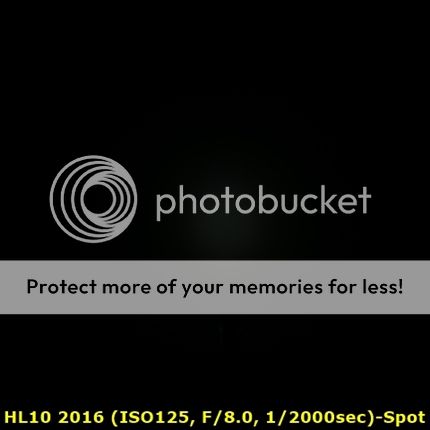
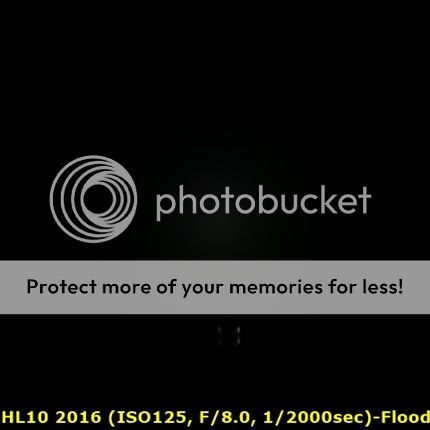
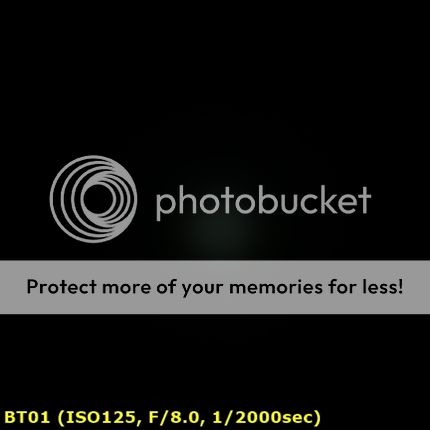
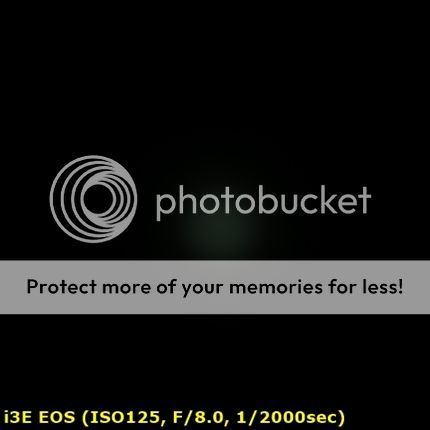
As you can see, the HL10 2013 is all flood. The HL10 2016 with flood beam smooths out the hotspot and gives you less spill, in my view. It seems there is not hugh difference between the spot and flood beam in a very short distance as above. The overall beam profile is good. The tint is very close to neutral white on my sample.
.
.
2. 3.0m Indoor Beamshot on max. output on 1xPanasonic Eneloop AAA (750mAh)
- ISO125, F/2.8, 1/10sec, Auto white balance
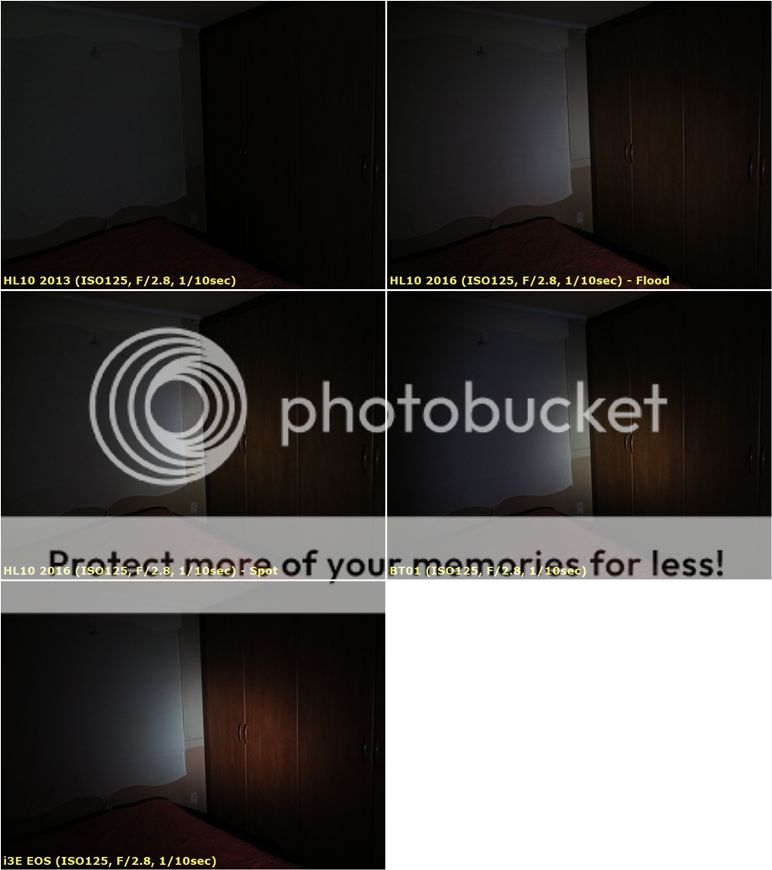
.
.
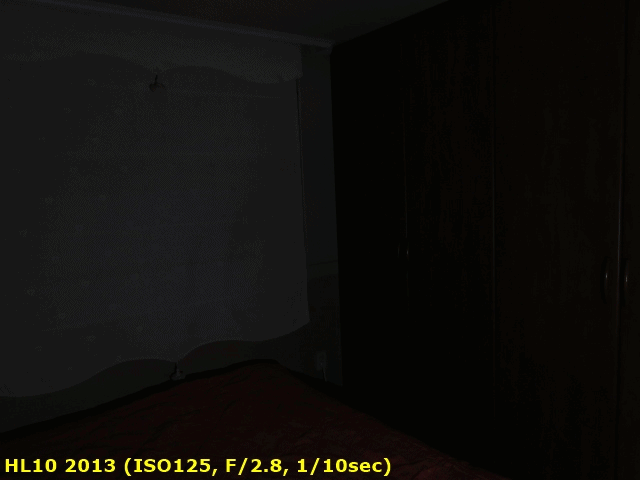
.
.
3. 3.5m Indoor Beamshot on max. output on 1xPanasonic Eneloop AAA (750mAh)
- ISO125, F/2.8, 1/10sec, Auto white balance
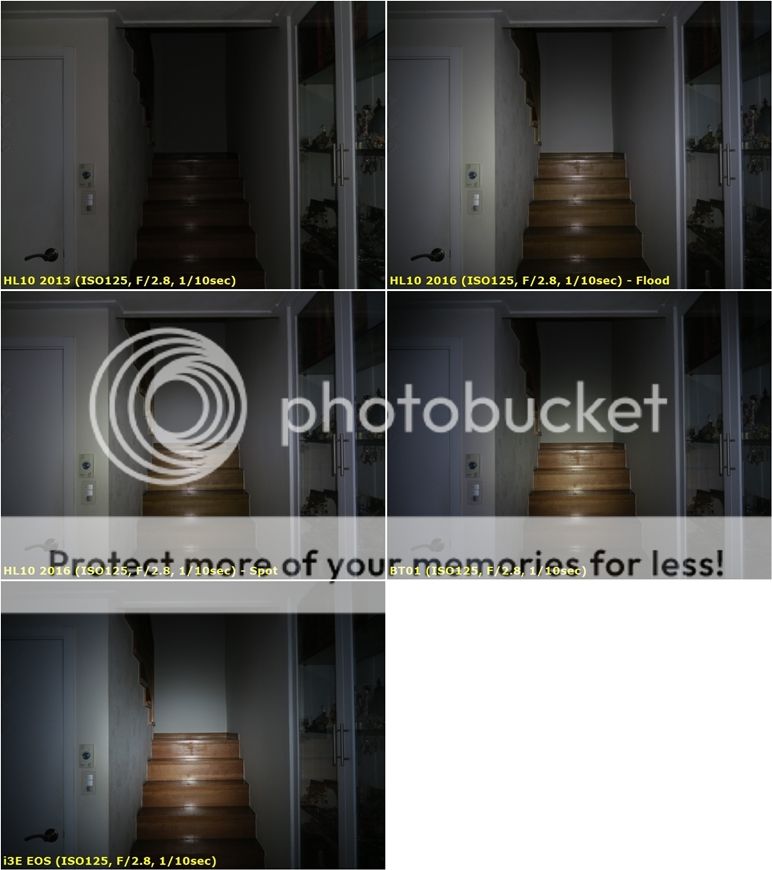
.
.
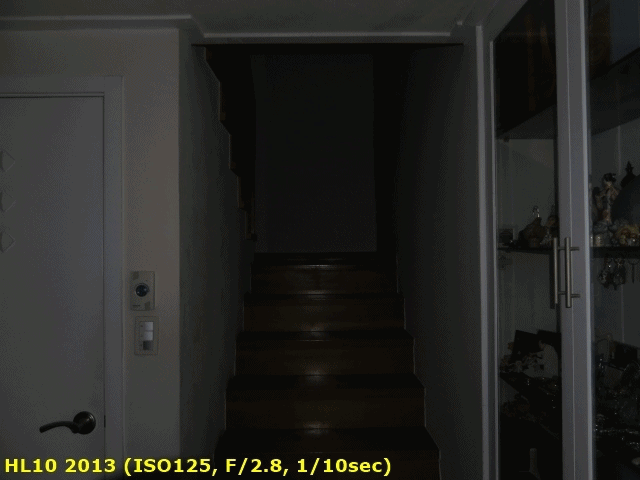
.
.
4. 7.0m Indoor Beamshot on max. output on 1xPanasonic Eneloop AAA (750mAh)
- ISO125, F/2.8, 1/10sec, Auto white balance
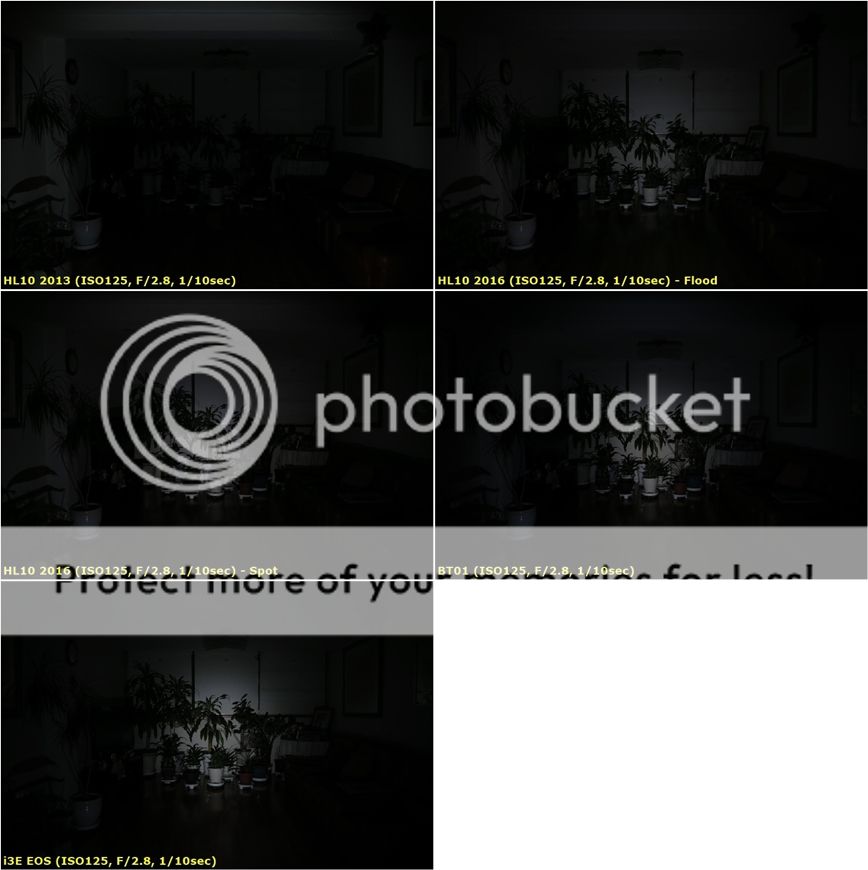
.
.
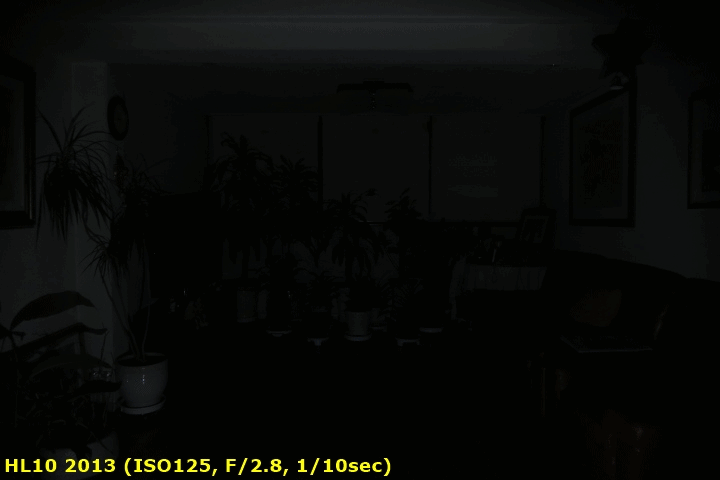
.
.
Overall Impressions
• Excellent build quality
• The light can tailstand
• No anti-roll indentations on the body
• Physical lockout function
• Physical reverse polarity protection function
• Difficult to unscrew the tailcap and change battery when the light is mounted in the holder
• Perfectly flat regulation for an extended period on Ni-MH & Alkaline on High mode
• 10440~10450 Li-ion is not officially supported
• Mode memory
• Good mode spacing
• Lower low mode is not available
• No PWM at any output level
• Overall beam profile is good
• Overall beam tint is very close to neutral white
Fenix HL10 2016 provided by Fenix for review.

.
.

The light comes in a clear plastic container. It comes with a headband, spare o-ring, key ring, 1xAAA battery, user manual and warranty card.
.
.
Manufacturer Specifications from Fenix website & manual :
• Utilizes Philips LXZ2-5770 LED with a lifespan of 50,000 hours
• Powered by one AAA (Ni-MH/Alkaline) battery
• 70mm / 2.76" (Length) x 26mm / 1.02" (Width) x 23mm / 0.91" (Height)
• 33g / 1.2oz. (including headband, excluding battery)
• Uses rotating optical lens for flexible adjustment of spotlight and floodlight
• As a headlamp, 180-degree tilt mechanism adjusts the beam when needed
• As a flashlight, supports tail standing, works as a candle
• Digitally regulated output maintains constant brightness
• Reverse polarity protection, to protect from improper battery installation
• Made of durable aircraft-grade aluminum
• Three colors option


.
.


Like the HL10 2013, the HL10 2016 headlamp is a light and holder structure. You can use it as a key-chain light.
.
.

The hard plastic holder is composed of a clip holding the light and a bracket for headband. The clip holds the light fairly firmly, but it seems there may be no risk of scratching the light when pulling it off or fitting it into the clip, as the material is plastic.
.
.





You have three body color options available (i.e., gold, black and lilac). My review sample is gold. I'm not sure the anodizing is hard type III, but it's a matt gold and consistent throughout with no chips or blemishes to be found on my sample. Labels are fairly minimal and not as bright as other lights, but clearly legible against the background. There is no anti-roll indentations on the body
.
.

The light has 2 parts (i.e. integral head-battery tube and tailcap).
.
.

You can see some differences between the HL10 2013 and the HL10 2016.
.
.

The light has electronic control switch on the head. The switch cover has a textured grip, and is slightly protruded. Like the HL10 2013, it has a firmer switch feel, requiring a definite click to activate. The switch is easy to access. Feel of the switch is good for this type, with a lightly audible click as you make contact. The positive contact in the head has a physical reverse polarity protection. There is a rotatable lens which is plastic.
.
.


There are the beam pattern marks (i.e., flood and spot beam) on the rear part of the body, and you can select the beam pattern, rotating a detent on the rotatable lens.
.
.

The battery tube has a clean cylindrical tube design with four flat faces machined on where manufacturer name, model name and serial number are printed. There is no knurling on the tube. Unlike the HL10 2013, tail threads are anodized, so tail lockout is possible. Base of the tailcap has a simple spring.
.
.

The screw threads are good quality triangular-cut. My sample has no lube on the threads. But I haven't experienced any problems with cross-threading. It is difficult to unscrew the tailcap and change battery when the light is mounted in the clip of the holder.
.
.

The rear end of the tail cap has a tiny hole for split-ring attachment. It seems to be stronger than the HL10 2013, as it is slightly farther to the edge. The HL10 2016 can tailstand, without the split-ring attachment.
.
.



There is a stopper for adjusting the strap. The headband is good quality, and worked well in my testing. It holds the headlamp securely (both within the holder, and strapped to your head), but still allows for accurate positioning. The headband may fit to those who has large head size, as its length is longer than the HL10 2013.
.
.

The angle adjustment is 360 degree (i.e., the light can rotate freely in the clip) and the light is not moved at any point during use.
.
.


From left to right, Panasonic Eneloop AAA(750mAh), Olight i3E EOS (Luxeon TX), Bronte BT01 (XP-G2), Fenix HL10 2013 (XP-E R4), Fenix HL10 2016 (LXZ2-5770), Jetbeam Jet-μ (XP-G2 S2), Ultratac K18 (XP-G2 S2).
.
.

The HL10 2016 is very small, and its weight is lighter than the HL10 2013.
.
.

The light itself is very compact. The wall thickness of the tube is 1.3mm (i.e., almost the same as the HL10 2013). The light feels solid. The use of Li-ion 10440~10450 rechargeable is banned. The build quality is excellent.
.
.
User Interface
HL10 2016 has the same UI as the HL10 2013.
There are three constant output levels only (i.e., no flashing mode).
The light is turned on/off by pressing and holding the switch for 0.5 seconds.
Give a quick click of the switch to advance through outputs when on, which proceed in sequence from Low -> Med. -> High, in repeating sequence. The light has mode memory, and remembers the last output level used when you turn the light off and back on, (even after a battery change).
.
.
Standby Current Drain
Due to the electronic switch, there is going to be a standby current drain when a battery is installed. I measured this current as 14.8 uA that is the same value as the HL10 2013. Considering Eneloop AAA (750mAh) capacity, that would give you around 5.8 years before fully charged battery would be completely drained. As there is tail lock-out feature, the drain is absolutely nothing to worry about. As usual, I recommend you keep a battery separate from the light when not in use for a long time.
.
.
PWM

The lights show no sign of PWM at any output level. The light is constant current controlled. I notice there is no buzzing sound at any levels.
.
.
Runtime
The runtime to fall to 10% of its initial output from 30 seconds after the point the light is first turned on (i.e., based on ANSI FL-1) for High is as follows :

As expected, the higher capacity cell gives you extended runtime. The light maintains perfectly flat regulation for an extended period, before dropping output through High on both two different chemical batteries. The difference is how long they last before falling out of regulation.
.
.
Beamshot
1. White door beamshot (about 50cm from the white door) on max. output on 1xPanasonic Eneloop AAA (750mAh)
- ISO125, F/8.0, 1/25sec, Auto white balance





.
.
- ISO125, F/8.0, 1/100sec, Auto white balance





.
.
- ISO125, F/8.0, 1/800sec, Auto white balance





.
.
- ISO125, F/8.0, 1/2000sec, Auto white balance





As you can see, the HL10 2013 is all flood. The HL10 2016 with flood beam smooths out the hotspot and gives you less spill, in my view. It seems there is not hugh difference between the spot and flood beam in a very short distance as above. The overall beam profile is good. The tint is very close to neutral white on my sample.
.
.
2. 3.0m Indoor Beamshot on max. output on 1xPanasonic Eneloop AAA (750mAh)
- ISO125, F/2.8, 1/10sec, Auto white balance

.
.

.
.
3. 3.5m Indoor Beamshot on max. output on 1xPanasonic Eneloop AAA (750mAh)
- ISO125, F/2.8, 1/10sec, Auto white balance

.
.

.
.
4. 7.0m Indoor Beamshot on max. output on 1xPanasonic Eneloop AAA (750mAh)
- ISO125, F/2.8, 1/10sec, Auto white balance

.
.

.
.
Overall Impressions
• Excellent build quality
• The light can tailstand
• No anti-roll indentations on the body
• Physical lockout function
• Physical reverse polarity protection function
• Difficult to unscrew the tailcap and change battery when the light is mounted in the holder
• Perfectly flat regulation for an extended period on Ni-MH & Alkaline on High mode
• 10440~10450 Li-ion is not officially supported
• Mode memory
• Good mode spacing
• Lower low mode is not available
• No PWM at any output level
• Overall beam profile is good
• Overall beam tint is very close to neutral white
Fenix HL10 2016 provided by Fenix for review.
Last edited:

